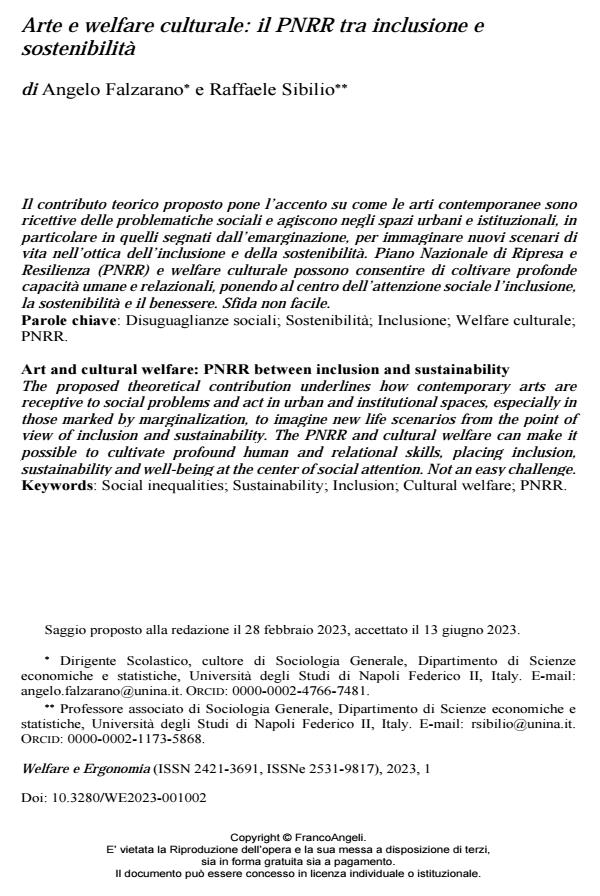Art and cultural welfare: PNRR between inclusion and sustainability
Journal title WELFARE E ERGONOMIA
Author/s Angelo Falzarano, Raffaele Sibilio
Publishing Year 2023 Issue 2023/1
Language Italian Pages 10 P. 15-24 File size 325 KB
DOI 10.3280/WE2023-001002
DOI is like a bar code for intellectual property: to have more infomation
click here
Below, you can see the article first page
If you want to buy this article in PDF format, you can do it, following the instructions to buy download credits

FrancoAngeli is member of Publishers International Linking Association, Inc (PILA), a not-for-profit association which run the CrossRef service enabling links to and from online scholarly content.
The proposed theoretical contribution underlines how contemporary arts are receptive to social problems and act in urban and institutional spaces, especially in those marked by marginalization, to imagine new life scenarios from the point of view of inclusion and sustainability. The PNRR and cultural welfare can make it possible to cultivate profound human and relational skills, placing inclusion, sustainability and well-being at the center of social attention. Not an easy challenge.
Keywords: Social inequalities; Sustainability; Inclusion; Cultural welfare; PNRR.
Angelo Falzarano, Raffaele Sibilio, Arte e welfare culturale: il PNRR tra inclusione e sostenibilità in "WELFARE E ERGONOMIA" 1/2023, pp 15-24, DOI: 10.3280/WE2023-001002